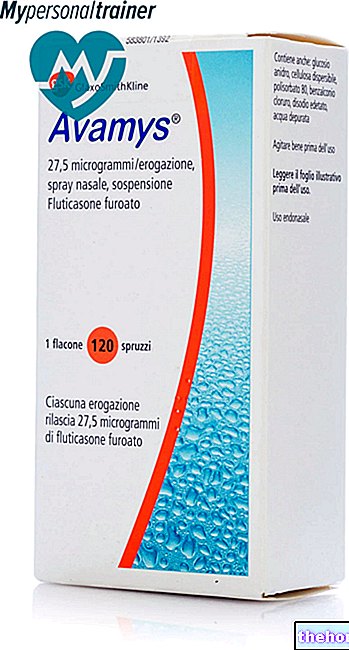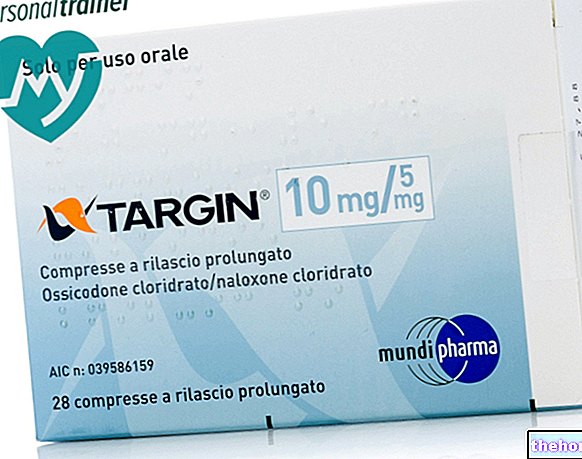Active ingredients: Methylprednisolone aceponate
ADVANTAN 0.1% cream
Advantan package inserts are available for pack sizes:- ADVANTAN 0.1% cream
- ADVANTAN 0.1% hydrophobic cream methylprednisolone aceponate
- ADVANTAN 0.1% methylprednisolone aceponate cutaneous solution
- ADVANTAN 0.1% methylprednisolone aceponate ointment
- Advantan 0.1% skin emulsion
Indications Why is Advantan used? What is it for?
Advantan contains methylprednisolone aceponate, a powerful corticosteroid.
Advantan is used to treat eczema (inflammatory, non-contagious dermatitis affecting the surface of the skin) such as:
- constitutional eczema (atopic dermatitis, neurodermatitis),
- vulgar eczema,
- allergic and irritative contact eczema,
- dyshidrotic eczema,
- eczema of children.
The formulation of Advantan cream, due to its high water content, allows the flow of exudates (inflammatory liquids) and is therefore particularly suitable for the treatment of eczematous forms secreting in the acute phase of skin areas subject to maceration, uncovered and covered by hair.
Contraindications When Advantan should not be used
- if you are allergic to the active substance or any of the other ingredients of this medicine (listed in section 6);
- if the area to be treated is affected by tuberculosis or syphilis;
- if you have viral infections (e.g. chicken pox or herpes zoster);
- if you have skin diseases accompanied by bacterial or fungal infections;
- if you have rosacea (redness and flaking that characterize some areas of the face);
- if you have "inflammation of the skin around the mouth (perioral dermatitis);
- if you suffer from ulcers, acne vulgaris and atrophic dermatitis;
- if there are skin reactions to vaccinations (redness) in the area to be treated.
Precautions for use What you need to know before taking Advantan
Corticosteroids should be administered only at the lowest possible dose, especially in children, and only for the period strictly necessary to achieve and maintain the desired therapeutic effect.
The use, especially if prolonged, of products for cutaneous use can give rise to sensitization phenomena and cause unwanted effects. In this case it is necessary to stop the treatment and consult your doctor.
As with all corticosteroids, inappropriate use can mask clinical symptoms.
Talk to your doctor or pharmacist before using Advantan:
- if you have skin diseases accompanied by bacterial or fungal infections for which treatment with a specific therapy is required;
- if you have local skin infections because they can get worse with the use of corticosteroids that are applied to the skin;
- if you notice excessive dry skin after applying Advantan cream for prolonged periods, switch to a higher fat content formulation (Advantan hydrophobic cream or ointment);
- if you have glaucoma, please tell your doctor. As is known for corticosteroids that have an effect on the whole organism (systemic corticosteroids), even with the use of corticosteroids that are applied locally on the area to be treated (topical corticosteroids) it is possible the onset of glaucoma (eg after "use in excessive doses or on large areas for prolonged periods, with occlusive bandaging techniques or after application on the skin around the eyes);
- if you use Advantan to treat large areas of the body or for prolonged periods of time, particularly under occlusive dressing, the duration of treatment should be as short as possible, since the risk of absorption and the occurrence of systemic side effects does not they can be completely excluded.
Advantan should not come into contact with eyes, open wounds and mucous membranes.
Occlusive dressing should be avoided unless indicated. Note that the diaper as well as the intertriginous areas can act as an occlusive dressing.
Children
Do not use Advantan with the diaper as the diaper can act as an occlusive dressing.In fact, Advantan should not be used in occlusive dressing.
In the case of children between 4 months and 3 years of age, a careful evaluation by the doctor of the risk / benefit ratio is required.
Interactions Which drugs or foods can modify the effect of Advantan
Tell your doctor or pharmacist if you are using, have recently used or might use any other medicines.
No interactions with other medicines are known to date.
Warnings It is important to know that:
Pregnancy, breastfeeding and fertility
If you are pregnant or breast-feeding, think you may be pregnant or are planning to have a baby, ask your doctor or pharmacist for advice before using this medicine.
Pregnancy
As a general rule, the use of corticosteroids should be avoided during the first trimester in pregnant women. In particular, treatment on large skin areas, prolonged use or occlusive dressing should be avoided during pregnancy. (see "Warnings and Precautions").
Some epidemiological studies suggest that there may be a possible increased, albeit limited, risk of cleft palate (palate malformation) in newborns from women treated with systemic corticosteroids during the first trimester of pregnancy.
Consequently, during pregnancy, Advantan should only be used if, according to the doctor, the benefits outweigh the risks.
Feeding time
It is not known whether topical administration of Advantan can lead to sufficient systemic absorption of methylprednisolone aceponate to result in detectable quantities in breast milk. For this reason, care should be taken when Advantan is administered to breastfeeding women.
Breastfeeding women should not be treated on the breasts.
Treatment of large skin areas, prolonged use or occlusive bandages should be avoided during breastfeeding (see "Warnings and Precautions").
Fertility
No information is available regarding the influence of methylprednisolone aceponate on fertility.
Driving and using machines
Advantan does not affect the ability to drive or use machines.
Advantan cream contains cetostearyl alcohol. May cause local skin reactions (e.g. contact dermatitis).
Advantan cream contains butylhydroxytoluene. It can cause local skin reactions (e.g. contact dermatitis) or irritation of the eyes and mucous membranes.
Dosage and method of use How to use Advantan: Dosage
Always use this medicine exactly as your doctor or pharmacist has told you. If in doubt, consult your doctor or pharmacist.
Unless otherwise prescribed, Advantan must be applied in a thin layer with a light massage, once a day, on the affected skin area.
In the case of treatment on large skin areas, the duration of therapy must be appropriately limited by the doctor.
The duration of treatment should not exceed 12 weeks in adults and 4 weeks in children.
Use in children
The safety of Advantan in infants below 4 months has not been established.
Overdose What to do if you have taken too much Advantan
If you use more Advantan than you should
If cases of skin atrophy (more or less marked thinning of the skin and subcutaneous tissues) occur due to the use of Advantan in greater quantities than necessary, the treatment should be interrupted. Symptoms usually subside within 10 to 14 days.
The results of acute toxicity studies with methylprednisolone aceponate did not indicate any risk of acute intoxication following single skin application of an excessive amount (application over a "large surface under conditions favoring absorption) or accidental ingestion of Advantan. .
In case of accidental ingestion / intake of an overdose of Advantan, notify your doctor immediately or go to the nearest hospital.
IF YOU HAVE ANY DOUBTS ABOUT THE USE OF ADVANTAN, PLEASE ASK YOUR DOCTOR OR PHARMACIST.
If you forget to use Advantan
Do not use a double dose to make up for a forgotten dose.
If you stop taking Advantan
If you have any further questions on the use of this medicine, ask your doctor or pharmacist.
Side Effects What are the side effects of Advantan
Like all medicines, this medicine can cause side effects, although not everybody gets them.
The assessment of undesirable effects is generally based on the following frequency conventions:
Very common: present in more than 1 user in 10. Common: present in 1 to 10 users in 100.
Uncommon: present in 1 to 10 users in 1000. Rare: present in 1 to 10 users in 10,000.
Very rare: present in more than 1 user in 10,000.
Not known: frequency cannot be estimated from the available data.
Infections and infestations
- Rare: fungal infections of the skin.
General disorders and administration site conditions
- Common: burning, itching.
- Uncommon: dryness, erythema, blisters, folliculitis (inflammation of the hair follicles), rash, paraesthesia (tingling).
- Rare: cellulite, edema, irritation.
- Not known: hypertrichosis (increased hair).
Immune system disorders:
- Uncommon: drug allergy.
Skin and subcutaneous tissue disorders
- Rare: pyoderma (dermatosis with characteristic ulcers), skin fissures, telangiectasias (permanent dilation of the capillaries), skin atrophy, acne.
- Not known: skin striae, perioral dermatitis (inflammation of the skin around the mouth), skin discoloration, allergic skin reaction.
Systemic effects due to absorption may occur if topical corticosteroid preparations are applied.
Reporting of side effects
If you get any side effects, talk to your doctor or pharmacist. This includes any possible side effects not listed in this leaflet. You can also report side effects directly via the national reporting system at https://www.aifa.gov.it/content/segnalazioni-reazioni-avverse By reporting side effects you can help provide more information on safety of this medicine.
Expiry and Retention
Keep this medicine out of the sight and reach of children.
Do not use this medicine after the expiry date which is stated on the package. The expiry date refers to the last day of that month.
The expiry date indicated refers to the product in intact packaging, correctly stored.
Store at a temperature not exceeding 25 ° C.
Validity after first opening: 3 months.
Do not throw away any medicines via wastewater or household waste. Ask your pharmacist how to throw away medicines you no longer use.
This will help protect the environment.
Composition and pharmaceutical form
What Advantan contains
- The active ingredient is methylprednisolone aceponate.
1 g of cream contains 1 mg of methylprednisolone aceponate (0.1%).
- The other ingredients are: decyl oleate, glycerolmonostearate 40-55, cetostearyl alcohol, solid semisynthetic glycerides, triglycerides of saturated vegetable fatty acids, polyoxyl-40-stearate, glycerol 85%, edetate disodium, benzyl alcohol, butylhydroxytoluene, purified water.
What Advantan looks like and contents of the pack
Cream, 20 g tube.
Cream, 50 g tube
Source Package Leaflet: AIFA (Italian Medicines Agency). Content published in January 2016. The information present may not be up-to-date.
To have access to the most up-to-date version, it is advisable to access the AIFA (Italian Medicines Agency) website. Disclaimer and useful information.
01.0 NAME OF THE MEDICINAL PRODUCT
ADVANTAN
02.0 QUALITATIVE AND QUANTITATIVE COMPOSITION
Advantan 0.1% cream
1 g of cream contains: methylprednisolone aceponate 1 mg (0.1%)
Excipients with known effects: cetostearyl alcohol and butylhydroxytoluene.
Advantan 0.1% hydrophobic cream
1 g of cream contains: methylprednisolone aceponate 1 mg (0.1%)
Advantan 0.1% ointment
1 g of ointment contains: methylprednisolone aceponate 1 mg (0.1%)
Advantan 0.1% cutaneous solution
1 ml of solution contains: methylprednisolone aceponate 1 mg (0.1%)
For the full list of excipients see section 6.1.
03.0 PHARMACEUTICAL FORM
Cream (oil-in-water emulsion, white to yellowish opaque cream).
Hydrophobic cream (water-in-oil emulsion, white to yellowish opaque cream).
Ointment (translucent white to yellowish ointment).
Skin solution.
04.0 CLINICAL INFORMATION
04.1 Therapeutic indications
Advantan cream, hydrophobic cream and ointment:
Constitutional eczema (atopic dermatitis, neurodermatitis); vulgar eczema; allergic and irritative contact eczema; dyshidrotic eczema; eczema of children.
Advantan cutaneous solution:
Inflammatory dermatosis of the scalp associated with itching such as: constitutional eczema (atopic dermatitis, neurodermatitis), seborrheic eczema, contact eczema, nummular eczema, vulgar eczema.
04.2 Posology and method of administration
Unless otherwise prescribed by a doctor, Advantan, in the form most suitable for the skin characteristics, must be applied topically in a thin layer with a light massage, once a day, on the affected skin area. Advantan cutaneous solution must be applied drop by drop, always once a day, on the areas affected by the disease, with a light massage.
Advantan is available in four pharmaceutical forms: cream, hydrophobic cream, ointment and skin solution.
The formulation of Advantan cream (1 g of Advantan cream contains 1 mg of methylprednisolone aceponate), due to its high water content, allows the flow of exudates and is therefore particularly suitable for the treatment of eczematous secreting forms in the acute phase, of the skin areas subject to maceration, uncovered and covered with hair. If the application of Advantan cream for prolonged periods induces an excessive skin dryness, it is necessary to switch to a formulation with a higher fat content (Advantan hydrophobic cream or ointment).
The Advantan hydrophobic cream formulation (1 g of Advantan hydrophobic cream contains 1 mg of methylprednisolone aceponate) ensures an appropriate lipid supply to the skin without blocking perspiration and heat exchanges. Due to its characteristics, Advantan hydrophobic cream has a rather wide field of use that ranges from skin affections that are not excessively secreting to those that are not particularly dry.
The formulation of Advantan ointment (1 g of Advantan ointment contains 1 mg of methylprednisolone aceponate), with the anhydrous base with an occlusive effect, maintains skin moisture by softening the thickened skin layer and facilitating the penetration of the active ingredient. Therefore Advantan ointment is particularly indicated in the dry forms and in the chronic stages.
The formulation of Advantan cutaneous solution (1 ml of Advantan solution contains 1 mg of methylprednisolone aceponate) is particularly suitable for dermatosis of the scalp and areas covered with hair, as it allows a "homogeneous distribution and, consequently, penetration of the active ingredient. .
In general, the duration of treatment with Advantan cream, hydrophobic cream and ointment should not exceed 12 weeks in adults, while it should not exceed 4 weeks with Advantan solution.
Pediatric population
The safety of Advantan cream, hydrophobic cream and ointment in infants under 4 months has not been established.
No dosage adjustments are required when Advantan cream, hydrophobic cream and ointment are given to children. In general, the duration of treatment should not exceed 4 weeks in children.
The safety of Advantan solution in children and adolescents below 18 years has not been established. No data are available.
04.3 Contraindications
Advantan must not be used in case of hypersensitivity to the active substance or to any of the excipients listed in section 6.1, presence of tuberculous or luetic processes in the area to be treated, viral infections (e.g. chicken pox, herpes zoster), rosacea, perioral dermatitis, ulcers, acne vulgaris, atrophic dermatitis and skin reactions to vaccinations.
Skin diseases accompanied by bacterial or fungal infections (see section 4.4).
04.4 Special warnings and appropriate precautions for use
Corticosteroids should be administered only at the lowest possible dose, especially in children, and only for the period absolutely necessary to achieve and maintain the desired therapeutic effect.
In case of treatment on large skin areas, the duration of the therapy must be appropriately defined.
Furthermore, specific therapy is required in the treatment of skin diseases accompanied by bacterial and / or fungal infections.
Local skin infections can be exacerbated by the topical use of glucocorticoids.
No clinical data are available on the use of Advantan cutaneous solution in children.
Application of the medicinal product to the face is contraindicated in the presence of rosacea or perioral dermatitis (see section 4.3).
Care should be taken when using Advantan to avoid contact with eyes, open wounds and mucous membranes. Advantan cutaneous solution is flammable: it must not be applied near open flames.
No interference on adrenal function was observed in children after non-occlusive treatment with Advantan ointment on large skin areas (40-90% of the body surface). Following the application of Advantan hydrophobic cream on 60% of the body surface under occlusive dressing for 22 hours, a suppression of plasma cortisol levels and an influence on the circadian rhythm in healthy adult volunteers was observed, therefore it is necessary in such situations limit the treatment time to a minimum.
The use of corticosteroids on large body surfaces or for prolonged periods of time, particularly under occlusive dressing, significantly increases the risk of undesirable effects. Treatment in occlusive dressing should be avoided unless indicated. Note that the diaper as well as the intertriginous areas can act as an occlusive dressing.
In the case of treatment of large body surfaces, the duration of treatment should be as short as possible since the possibility of absorption or systemic effects cannot be completely excluded.
As with all corticosteroids, inadequate use can mask clinical symptoms.
As is known for systemic corticosteroids, even with the use of corticosteroids for cutaneous use it is possible the onset of glaucoma (eg after use in excessive doses or on large areas for prolonged periods, with occlusive bandaging techniques or after application to the skin around the eyes).
The use, especially if prolonged, of products for cutaneous use can give rise to sensitization phenomena. In this case it is necessary to interrupt the treatment and institute an adequate therapy.
Important information about some of the ingredients
Advantan 0.1% cream contains cetostearyl alcohol. May cause local skin reactions (e.g. contact dermatitis).
Advantan 0.1% cream contains butylated hydroxytoluene May cause local skin reactions (eg contact dermatitis). Butylated hydroxytoluene can also cause irritation of the eyes and mucous membranes.
Pediatric population
Advantan should not be used in occlusive dressing. Note that the diaper can act as an occlusive dressing.
A careful risk / benefit assessment is needed in the case of children between the ages of 4 months and 3 years.
04.5 Interactions with other medicinal products and other forms of interaction
They are not known to date.
04.6 Pregnancy and lactation
Fertility
No information is available regarding the influence of methylprednisolone aceponate on fertility.
Pregnancy
There are no adequate studies on the use of methylprednisolone aceponate in pregnant women.
Experimental animal studies with methylprednisolone aceponate have shown embryotoxic and / or teratogenic effects at doses exceeding the therapeutic dose (see section 5.3).
As a general rule, the use of corticosteroids in pregnant women should be avoided during the first trimester of pregnancy.In particular, treatment on large skin areas, prolonged use or occlusive dressing should be avoided during pregnancy and lactation.
Some epidemiological studies suggest that there may be a possible increased risk of cleft palate in neonates from women treated with systemic corticosteroids during the first trimester of pregnancy.
The clinical indication for treatment with Advantan in pregnancy should be carefully reviewed and the benefits weighed against the potential risks.
Feeding time
In rats, methylprednisolone aceponate was shown not to be transferred to infants through milk. However, it is not known whether metiprednisolone aceponate is secreted in breast milk, as systemically administered corticosteroids have been found in breast milk. It is not known whether topical administration of Advantan can lead to sufficient systemic absorption of methylprednisolone aceponate to result in detectable quantities in breast milk.
For this reason, care should be taken when Advantan is administered to breastfeeding women.
Breastfeeding women should not be treated on the breasts.
Treatment of large skin areas, prolonged use or occlusive dressing should be avoided during lactation (see section 4.4).
04.7 Effects on ability to drive and use machines
Advantan does not affect the ability to drive or use machines.
04.8 Undesirable effects
The frequency of undesirable effects observed during clinical trials and listed in the tables below are defined according to the MedDRA frequency: very common (≥1 / 10); common (≥1 / 100,
• Advantan 0.1% cream
• Advantan 0.1% hydrophobic cream
• Advantan 0.1% ointment
• Advantan 0.1% cutaneous solution
* Potential undesirable effects that were not observed during clinical trials.
Systemic effects due to absorption may occur if topical corticosteroid preparations are applied.
The most appropriate MedDra terminology (MedDra version 11.1) was used to describe a certain adverse reaction, its symptoms and related conditions.
Reporting of suspected adverse reactions
Reporting of suspected adverse reactions occurring after authorization of the medicinal product is important as it allows continuous monitoring of the benefit / risk balance of the medicinal product. Healthcare professionals are asked to report any suspected adverse reactions via the national reporting system. "address: www.agenziafarmaco.gov.it/it/responsabili
04.9 Overdose
Should cases of skin atrophy due to overdose of the topical preparation occur, the treatment should be discontinued. Symptoms usually subside within 10 to 14 days.
The results of acute toxicity studies with methylprednisolone aceponate did not indicate any risk of acute intoxication following single skin application of an excessive amount (application over a large surface under conditions favoring absorption) or accidental ingestion.
Following accidental ingestion of Advantan cutaneous solution, effects related to isopropyl alcohol, component of the base, may occur. These effects can present themselves as symptoms of depression affecting the central nervous system even with only a few milliliters of medicine.
05.0 PHARMACOLOGICAL PROPERTIES
05.1 Pharmacodynamic properties
Pharmacotherapeutic group: dermatological preparations, corticosteroids, potent (group III).
ATC code: D07AC14
After topical application, Advantan inhibits inflammatory and allergic skin reactions as well as those associated with cellular hyperproliferation, thus inducing the regression of objective (erythema, edema, maceration) and subjective (itching, burning, pain) symptoms.
Methylprednisolone aceponate is also known to bind to intracellular glucocorticoid receptors and this is clearly demonstrated for the major metabolite 6a-methylprednisolone-17-propionate, which is formed by ester cleavage in the skin.
The steroid-receptor complex binds to specific regions of the DNA, thus triggering a series of biological effects.
The binding with the steroid-receptor complex produces the activation of the synthesis of macrocortin; this substance inhibits the release of arachidonic acid and therefore the formation of inflammatory mediators such as prostaglandins and leukotrienes.
The immunosuppressive action of glucocorticoids can be explained by the inhibition of cytokine synthesis and an antimitotic effect not yet fully understood.
The vasoconstrictive activity of glucocorticoids derives from the inhibition of the synthesis of prostaglandins with a vasodilatory effect or from the enhancement of the vasoconstrictive effect of adrenaline.
05.2 Pharmacokinetic properties
Methylprednisolone aceponate is hydrolyzed in the epidermis and dermis to 6a-methylprednisolone-17-propionate, its main metabolite, which binds more firmly than the starting product to the corticoid receptor - clear indication of skin "bioactivation".
The percentage and extent of percutaneous absorption of a topical corticosteroid depends on a number of factors such as the chemical structure of the compound, the nature of the vehicle, the concentration of the compound in the vehicle, the conditions of exposure (treated area, duration of exposure, open or occlusive treatment) and the characteristics of the skin (type and severity of the pathology, anatomical location, etc.).
Percutaneous absorption of methylprednisolone aceponate from cream, hydrophobic cream and ointment formulations was studied in healthy volunteers. Percutaneous absorption after non-occlusive application of Advantan ointment (20 g twice daily) for 5 days was estimated at 0.35% corresponding to a corticosteroid load of approximately 4mcg / kg / day.
In conditions of occlusive dressing, the application of 15 g of Advantan cream twice a day for 7 days results in an average percutaneous absorption of about 2.5% corresponding to a systemic corticosteroid load of about 10mcg / kg / day. Percutaneous absorption of methylprednisolone aceponate through the skin experimentally damaged by the removal of the stratum corneum was significantly higher. In psoriatic adults and atopic patients, the percutaneous absorption of methylprednisolone aceponate from the ointment was approximately 2.5%.
Percutaneous absorption of methylprednisolone aceponate was evaluated in volunteers after a single application of an amount of Advantan 0.1% cutaneous solution ≤5 ml and in patients with scalp psoriasis after application once daily for 4 weeks.
In both studies, no systemic exposure of the drug was detected. Based on the limits of quantification, the percutaneous absorption of methylprednisolone aceponate from Advantan 0.1% cutaneous solution in the scalp was estimated to be below 10%, corresponding to a corticoid load of less than 4-7 mcg / kg / day. .
Upon entering the circulation, the primary hydrolysis product of methylprednisolone aceponate, 6a-methylprednisolone-17-propionate, is rapidly conjugated with glucuronic acid and, as such, inactivated.
Methylprednisolone aceponate metabolites (major metabolite: 6a-methylprednisolone-17-propionate-21-glucuronide) are eliminated primarily via the urine with a half-life of approximately 16 hours. Following administration e. v., urine and faecal elimination was completed within 7 days. There is no accumulation of the active substance or metabolites in the body.
05.3 Preclinical safety data
In systemic tolerance studies following repeated subcutaneous and dermal administrations, metiprednisolone aceponate exhibited an action profile typical of a glucocorticoid.
From these results it is possible to conclude that following the therapeutic use of Advantan, no side effects other than those typical of glucocorticoids are to be expected even in extreme conditions, such as application on large body surfaces and / or with occlusive bandages.
Embryotoxicity studies with Advantan have led to results typical of glucocorticoids, ie specific embryotoxic and / or teratogenic effects have been highlighted in the relative tests.
In view of these results, particular care should be taken when prescribing Advantan during pregnancy. The results of the epidemiological studies are summarized in section "4.6 Pregnancy and lactation".
Neither in vitro studies in bacteria and mammalian cells for the detection of genetic mutations, nor in vitro and in vivo studies for the detection of genetic chromosome mutations have provided any indication of a genotoxic potential of methylprednisolone aceponate.
No specific tumorigenicity studies have been conducted using methylprednisolone aceponate. Knowledge of the structure, mechanism of pharmacological effect and results of systemic tolerance studies with prolonged administration do not indicate any increased risk of tumors. Since systemically effective immunosuppressive exposure was not achieved with a "Skin application of Advantan under the recommended conditions of use", no influence on the occurrence of tumors is expected.
Results of local tolerability studies, following topical application of methylprednisolone aceponate and Advantan formulations on skin and mucous membranes, did not show local side effects other than those related to the use of glucocorticoids.
Sensitization: Methylprednisolone aceponate was shown to have no sensitizing potential in guinea pigs.
The local atrophying power evaluated in controlled studies on rats, rabbits and dogs was found to be very low.
06.0 PHARMACEUTICAL INFORMATION
06.1 Excipients
Advantan cream: decyl oleate, glycerolmonostearate 40-55, cetostearyl alcohol, solid semisynthetic glycerides, triglycerides of saturated vegetable fatty acids, polyoxyl-40-stearate, glycerol 85%, edetate disodium, benzyl alcohol, butylhydroxytoluene, purified water.
Advantan hydrophobic cream: white vaseline, liquid paraffin, white wax, high molecular weight aliphatic esters, purified water.
Advantan ointment: white petroleum jelly, liquid paraffin, microcrystalline wax, hydrogenated castor oil.
Advantan cutaneous solution: isopropyl myristate, isopropyl alcohol.
06.2 Incompatibility
Not relevant.
06.3 Period of validity
Cream, hydrophobic cream and skin solution: 3 years
Cream: after first opening: 3 months.
Ointment: 5 years.
06.4 Special precautions for storage
Cream and hydrophobic cream: store at a temperature not exceeding 25 ° C.
Ointment and cutaneous solution: store at a temperature not exceeding 30 ° C.
06.5 Nature of the immediate packaging and contents of the package
Cream, hydrophobic cream and ointment: 20 g tube.
Cream also available in 50 g tube
Aluminum tubes internally coated with epoxy-phenolic protective lacquer. Polyethylene screw cap.
Skin solution: 20 ml bottle.
White polyethylene multidose bottle, (with dropper and screw cap).
06.6 Instructions for use and handling
No special instructions.
07.0 MARKETING AUTHORIZATION HOLDER
Bayer S.p.A. - Viale Certosa, 130 - 20156 Milan
08.0 MARKETING AUTHORIZATION NUMBER
Advantan 0.1% cream 20 g tube A.I.C. n. 028159010
Advantan 0.1% hydrophobic cream 20 g tube A.I.C. n. 028159022
Advantan 0.1% ointment 20 g tube A.I.C. n. 028159034
Advantan 0.1% cutaneous solution 20 ml bottle A.I.C. n. 028159046
Advantan 0.1% cream 50 g tube A.I.C. n. 028159073
09.0 DATE OF FIRST AUTHORIZATION OR RENEWAL OF THE AUTHORIZATION
Cream, hydrophobic cream and ointment: 31.12.1992 / 16.11.2007
Skin solution: 28.07.1998 / 16.11.2007
10.0 DATE OF REVISION OF THE TEXT
01/2015




























